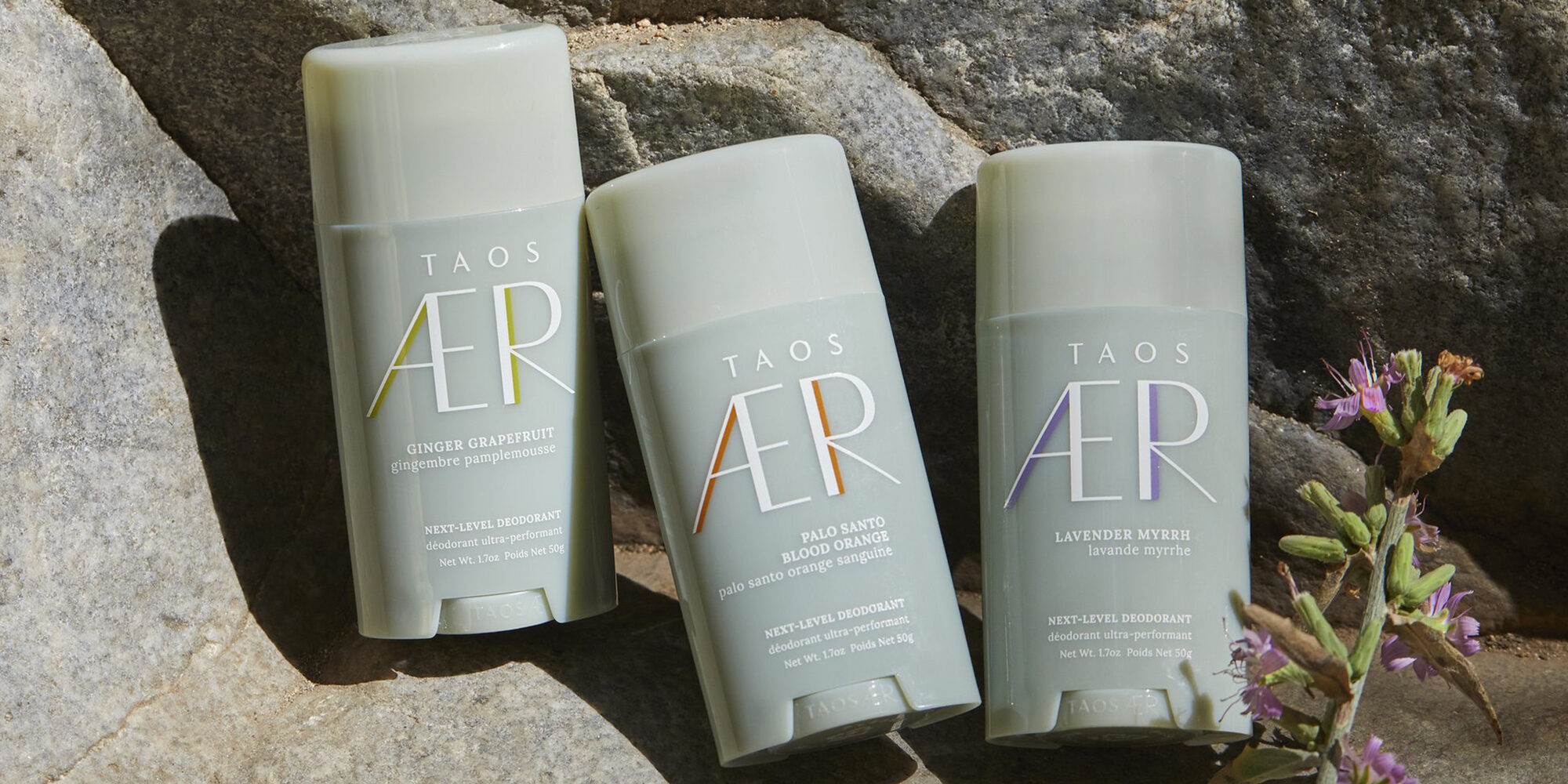
Born Under Vapour Beauty, Taos AER Ventures Out On Its Own To Target
Born in 2017 as an extension of Vapour, Taos AER is separating from its parent to become a distinct personal care brand entering Target.
At the massive retailer, which has amplified its aluminum-free deodorant assortment with the likes of Type:A, Art of Sport, Oars + Alps, Lavanila and Honestly Phresh, Taos AER is starting online with three scent variants of its natural deodorant in .7-oz. mini sizes: palo santo blood orange, lavender myrrh and ginger grapefruit. The brand is available at Anthropologie, Credo, The Detox Market, Follain and Aillea as well. Mini sizes are priced at $12, and 1.7-oz. standard sizes are priced at $19.
“What we see historically in deodorant and other commodity-type personal care products is they have been bought with little thought. Today’s consumer wants a higher level of experience,” says Lori Perella Krebs, former president of Frédéric Fekkai & Co. and founding partner at Ancora, which invested in Vapour in 2018. “Consumers are championing a movement from personal care to lifestyle care, and that’s where Taos AER has a voice. I call it everyday elevated essentials or the utilitarian step to prestige.”
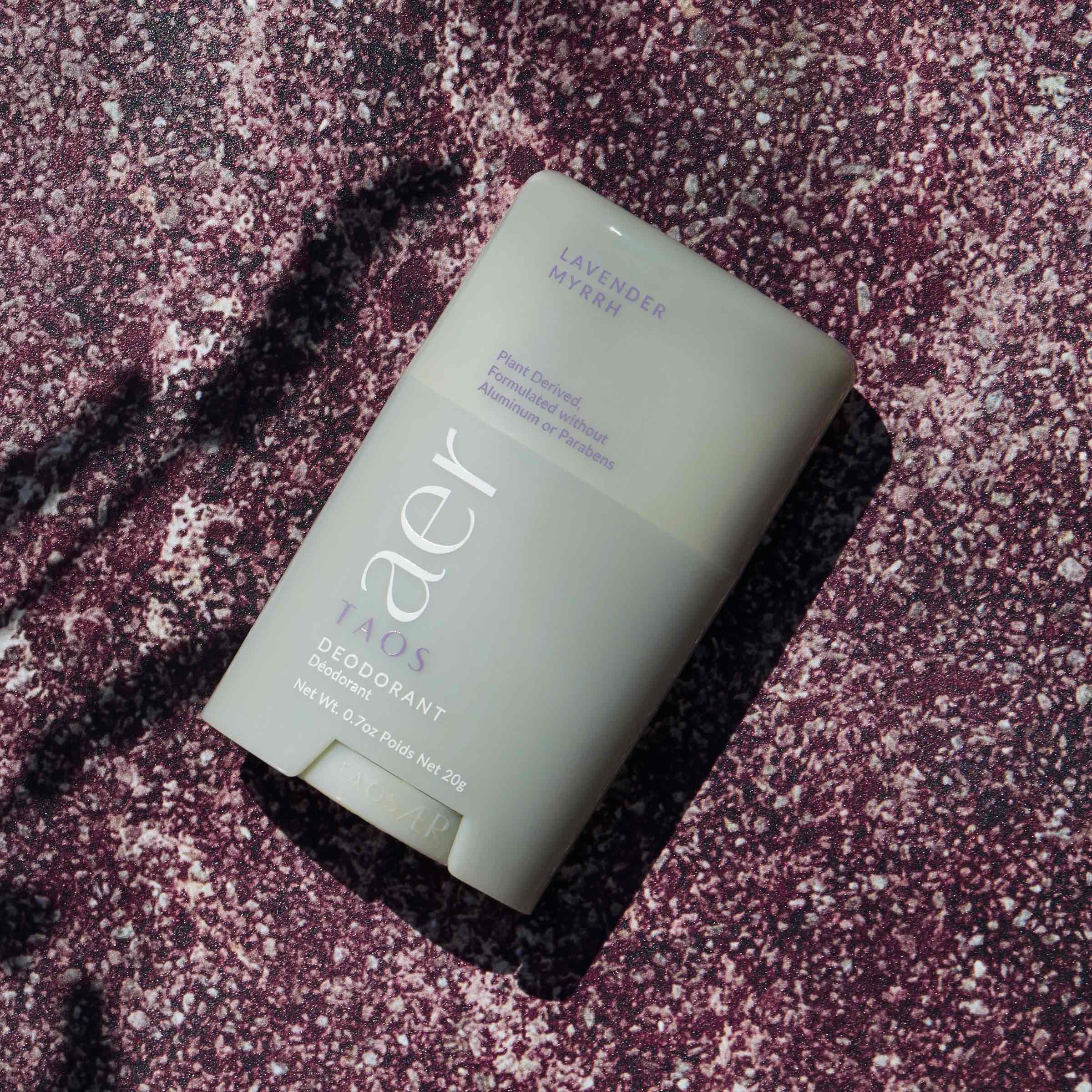
Kristine Keheley, who launched Vapour with Krysia Boinis in 2009, studied classical archeology and art at Dartmouth College before embarking on a beauty career that advanced clean beauty on both the brand and manufacturing sides of the industry. Taos AER unites her background by drawing upon her artistic sensibilities and archeology roots. It’s bathed in earth tones inspired by Taos, where she lives and the brand is headquartered, and is intended to improve upon with routine personal care maintenance with upgraded fragrance and texture. The AER in Taos AER is a reference to the ancient idea of aether, the element in the upper sky.
“For the Romans and Greeks, the timing and physicality of rituals were really important. Our wellness routines are the perfect place to create connection and find meaning in daily life,” says Keheley. “I don’t think they have to be rote or mindless. They should have a lot of sensory enjoyment and pleasure while they provide the experience of doing something good for yourself.”
“Consumers are championing a movement from personal care to lifestyle care, and that’s where Taos AER has a voice.”
Taos AER’s deodorant took four years to perfect. Keheley designed it as a gel-to-powder anhydrous format that was an antidote to the dry, chalky sticks on the market. In 2018, she reformulated it to transition from arrowroot, a common natural deodorant ingredient she says has a “high potential for contamination” that can complicate a “purely clean” product, to non-GMO cornstarch and organic tapioca powder. Taos AER’s deodorants have baking soda, too. Keheley says, “The new deodorant has been improved to have a more sophisticated, elegant drydown.”
The water-free component of Taos AER is central. Keheley explains it makes its deodorant incredibly concentrated. Even in the smaller size available at Target, she suggests customers are getting a lot of bang for their buck. Keheley says, “If you take water out, there’s no place for organisms to grow and, with the removal of water, we are making among the most sustainable choices anyone could make in personal care. We are not taxing the water table to make the product. Water should be for plants, animals and humans.”
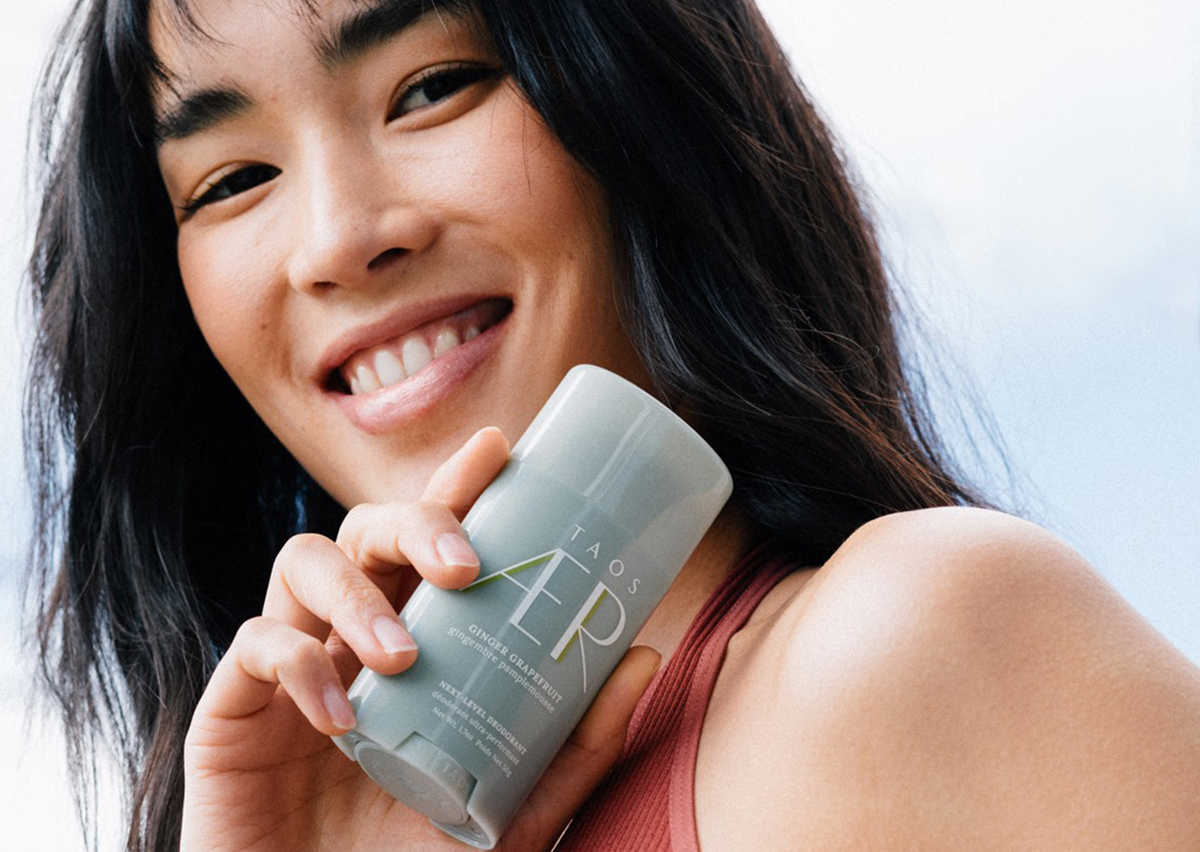
Taos AER’s deodorants are packaged in recyclable polypropylene (PP) without secondary boxes. The plan is to eventually shift to post-consumer resin (PCR) for the primary packaging. Keheley details the brand’s orders are shipped in recycled materials with 32% post-industrial content. It relies on 100% renewable energy at its facility in Taos. Keheley says, “Having been in this industry for 20 years, sustainability is a constant evolution, and every progression matters.”
In 2021, Taos AER expects to expand its deodorant repertoire to further scents, and versions in extra strength and without baking soda. The brand is also slated to branch into non-deodorant personal care items. Keheley says, “In each product category we go into, we will really be about making a difference in formulation, efficacy, performance, the sensory experience for the user, and the packaging.”
“Our wellness routines are the perfect place to create connection and find meaning in daily life.”
Krebs believes Target is the ideal stage for Taos AER to break into mass retail distribution because it’s been a clean beauty leader. Last year, it introduced a clean seal, and it currently has over 4,000 products within the clean arena that exclude ingredients such as phthalates, propyl-paraben, butylparaben and sodium laureth sulfate. Taos AER’s distribution is able to span prestige, mass and clean specialty retail. Krebs says, “Particularly now that conventional retailers understand the importance of clean, personal care can cast a much wider net.”
Taos AER mutually decided with Target to debut on the retailer’s e-commerce platform. Krebs explains, “What we want to do is set the brand up for success and, then, roll out when it makes sense.” Taos AER is in negotiations with retailers outside of its existing roster to enlarge its distribution network. As it increases its retail reach, the brand is paying attention to its direct-to-consumer channel. Krebs estimates 50% of its business could come from online sales. Taos AER declined to project sales for next year.

The deodorant segment has been struggling as consumers stuck inside during the pandemic aren’t worrying to the extent they normally would about smelling around friends and colleagues. However, long-term trends in the segment point to growth, especially in the organic, sustainable and natural fields. Krebs is bullish on the prospects of deodorants as part of a larger lifestyle push in personal care.
“This is a category that has permission to go in so many places, whether it’s sitting at a high-end boutique, national chain, outdoor retailer or health-conscious grocery outlet,” she says, while acknowledging challenges remain for aluminum-free deodorants. “There is a lot of education that will need to happen beyond our brand on the difference between deodorant and antiperspirant. Having spent a big portion of my career in Europe, I learned that it’s healthy to sweat and not healthy to clog pores. That is the obstacle that natural and clean deodorants have, persuading more consumers to understand that sweating is a health human function.”


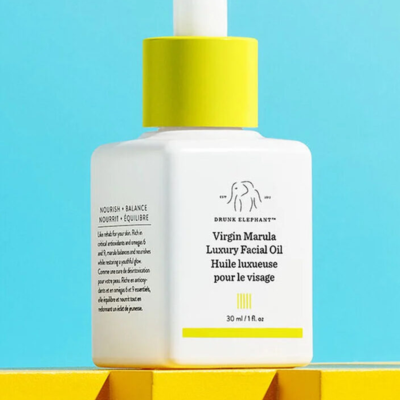

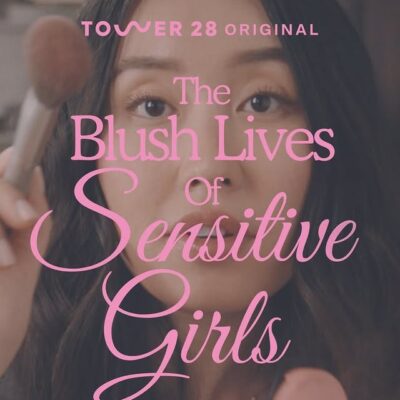
Leave a Reply
You must be logged in to post a comment.